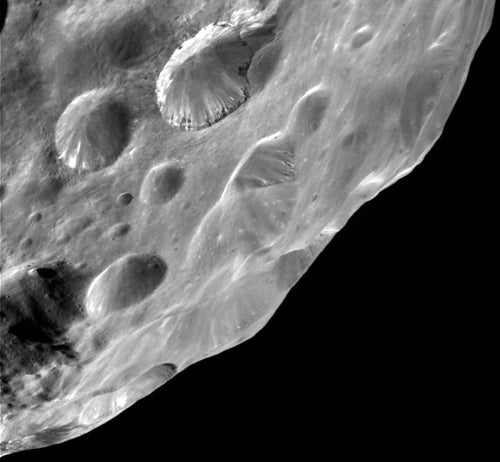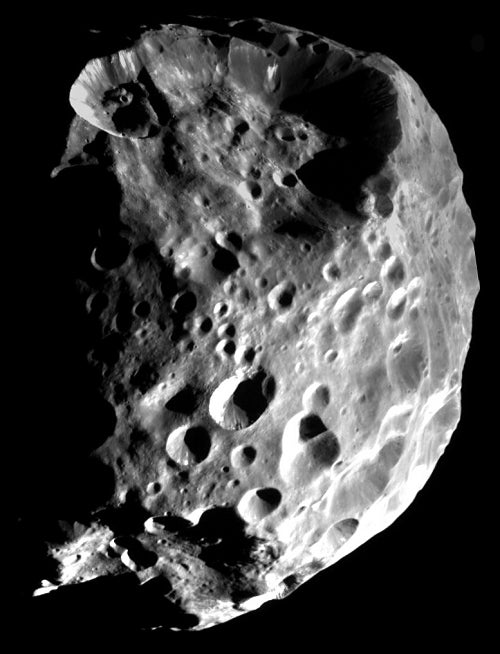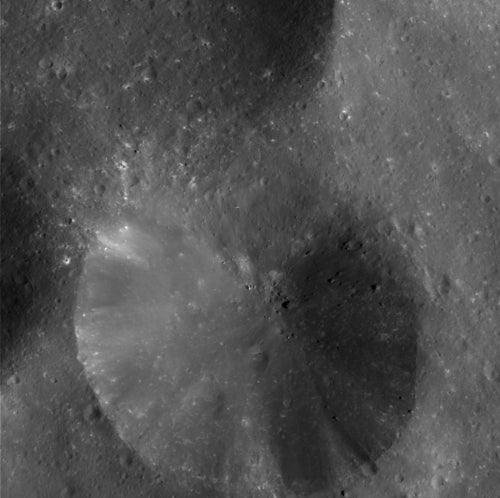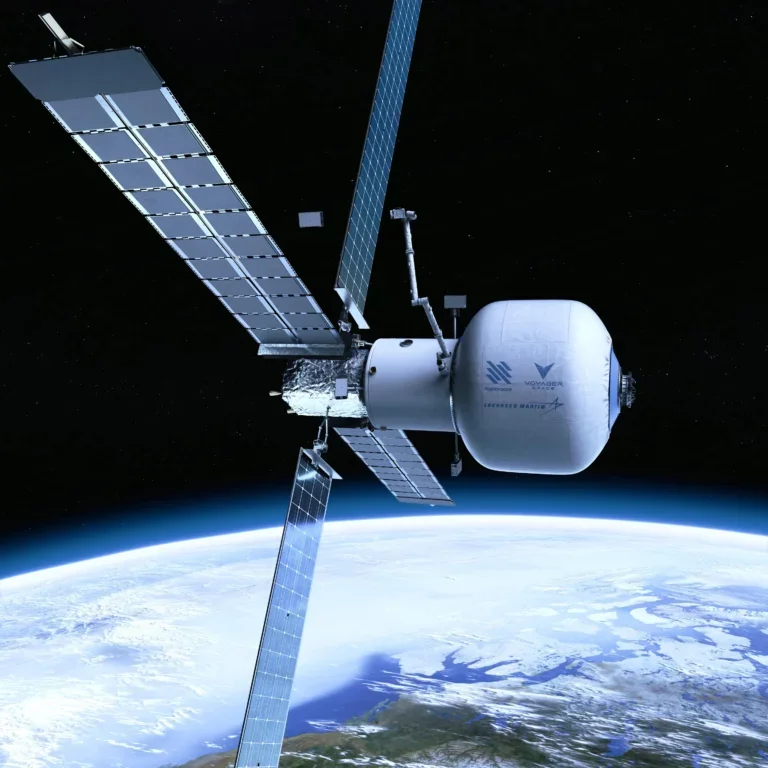Less than one week after observers around the world watched the historic transit of Venus, news from the solar system again demands our attention. On Friday, June 11, the Cassini space probe hurtled past its first target in the Saturn system, a small outer moon named Phoebe. Scientists released the first detailed images of the encounter today.
But this was their only opportunity to get a close look at Phoebe, which is almost four times farther from Saturn than the nearest large moon, Iapetus, and is substantially larger than any of the other moons orbiting at comparable distances. Phoebe measures 140 miles (220 kilometers) across, rotates on its axis every nine hours and 16 minutes, and completes a full orbit around Saturn in about 18 months. All of Saturn’s larger moons orbit nearly in the plane of Saturn’s equator — all, that is, except Phoebe and Iapetus. Phoebe’s path is highly eccentric, and it orbits opposite to the direction of Saturn’s other moons.
“This flyby is key to knowing more about the mysterious odd-ball, which has been the object of interest of many scientists,” said Dennis Matson, project scientist for the Cassini-Huygens mission. Cassini swept within 1,285 miles (2,068 km) of the dark moon. The probe was traveling at a speed of 13,000 miles (20,900 km) per hour relative to Saturn.
The last close-up view of Phoebe came 23 years ago, in 1981, when the Voyager 2 spacecraft passed 1,000 times farther from the moon than did Cassini. Based on Voyager data, scientists suspect that Phoebe may be a very primitive object. “All previous indications suggest that it may be a captured Kuiper Belt Object, one of the millions of asteroid-like bodies from outside the orbit of Pluto,” said Bonnie Buratti, a scientist on the Cassini mission at JPL. “With the flyby behind us, we may soon know whether Phoebe’s composition is unmodified since the time it was formed in the outer solar system. If it turns out to be a Kuiper Belt object, we could be looking at the most detailed close-ups of any such object ever taken,” she noted.
The next milestone for Cassini is a correction to its trajectory on Wednesday, June 16. Then, on June 30 (July 1 Universal Time), the spacecraft’s main engine will burn for 96 minutes, reducing Cassini’s speed so that Saturn can capture it into orbit.












